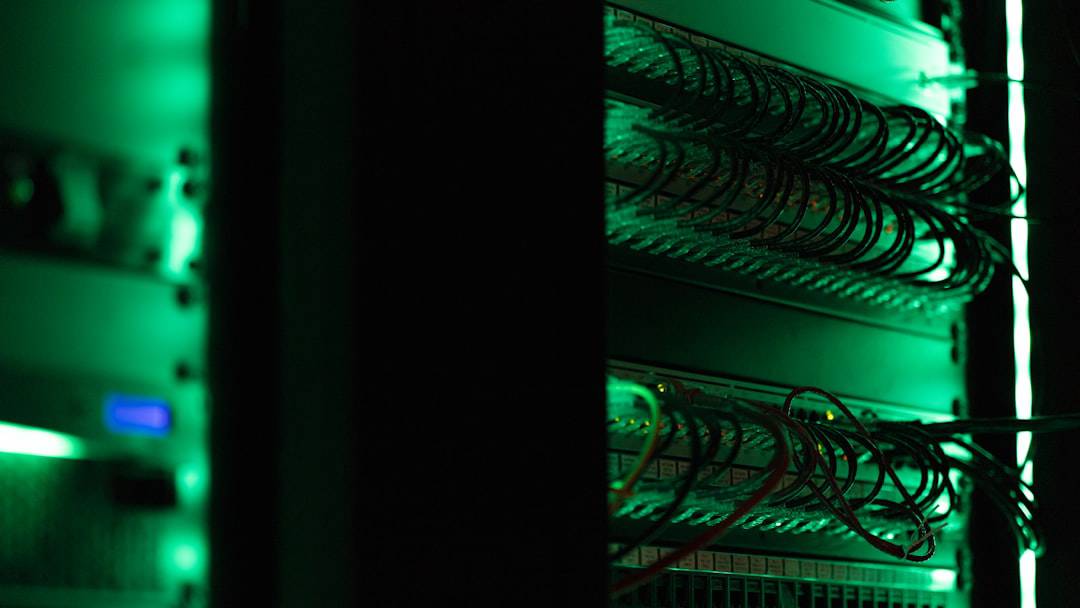Network security is a critical component of organizational operations, focusing on protecting data integrity, confidentiality, and resource availability within networks. Without adequate security measures, organizations face risks such as unauthorized access, data breaches, and malware attacks. These threats can result in financial losses, reputational damage, and legal consequences.
Prioritizing network security is essential for safeguarding sensitive information and maintaining stakeholder trust. In the current digital landscape, where data is a valuable asset, network security’s importance is paramount. The increasing frequency and sophistication of cyber attacks necessitate proactive implementation of robust security measures.
This includes investing in advanced security technologies, regularly updating software and systems, and educating employees on security best practices. By understanding network security’s significance and taking preventive actions, organizations can reduce security breach risks and ensure business continuity. Network security is not exclusive to large corporations; small and medium-sized businesses are equally vulnerable to cyber threats.
In fact, smaller organizations are often targeted by cybercriminals due to perceived vulnerabilities. It is crucial for businesses of all sizes to recognize network security’s importance and allocate resources to strengthen their defenses. This approach helps protect sensitive data, maintain customer trust, and avoid potentially devastating consequences of security breaches.
Key Takeaways
- Network security is crucial for protecting sensitive data and preventing unauthorized access.
- Common threats to data security include malware, phishing attacks, and insider threats.
- Strong password policies, including regular updates and complexity requirements, are essential for preventing unauthorized access.
- Encryption is a powerful tool for protecting data both at rest and in transit.
- Firewall and antivirus software should be regularly updated and installed to prevent and detect security threats.
- Educating employees on best practices for network security is essential for creating a culture of security awareness.
- Creating a data backup and recovery plan is crucial for minimizing the impact of data breaches and system failures.
Identifying Common Threats to Data Security
There are various common threats to data security that organizations need to be aware of in order to effectively protect their networks and sensitive information. One of the most prevalent threats is malware, which includes viruses, worms, Trojans, and ransomware. Malware can infiltrate a network through various means, such as malicious email attachments, infected websites, or removable storage devices.
Once inside a network, malware can cause significant damage by stealing data, disrupting operations, or extorting money through ransom demands. Another common threat to data security is phishing attacks, which involve tricking individuals into divulging sensitive information such as login credentials or financial details. Phishing attacks often take the form of deceptive emails or websites that appear legitimate but are designed to steal personal information.
Additionally, insider threats pose a significant risk to data security, as employees or other authorized users may intentionally or unintentionally compromise sensitive information. This can occur through actions such as unauthorized access, data theft, or accidental data loss. Furthermore, denial-of-service (DoS) attacks are a common threat that can disrupt network operations by overwhelming a system with an excessive amount of traffic or requests.
These attacks can render a network or website inaccessible to legitimate users, causing downtime and potentially impacting business operations. By identifying these common threats to data security, organizations can take proactive measures to mitigate risks and protect their networks from potential breaches.
Implementing Strong Password Policies

One of the fundamental aspects of network security is implementing strong password policies to protect user accounts and sensitive information. Weak or easily guessable passwords are a significant vulnerability that can be exploited by cybercriminals to gain unauthorized access to a network. Therefore, organizations should enforce password policies that require employees to create complex passwords that are difficult to crack.
This includes using a combination of uppercase and lowercase letters, numbers, and special characters, as well as avoiding easily guessable information such as birthdays or common words. In addition to creating strong passwords, organizations should also implement measures such as multi-factor authentication (MFA) to add an extra layer of security to user accounts. MFA requires users to provide multiple forms of verification before gaining access to a system, such as a password combined with a unique code sent to their mobile device.
This significantly reduces the risk of unauthorized access even if a password is compromised. Furthermore, it is essential for organizations to regularly update and change passwords to minimize the risk of unauthorized access. This includes enforcing password expiration policies that require users to change their passwords at regular intervals.
By implementing strong password policies and educating employees on best practices for creating and managing passwords, organizations can significantly enhance their network security and reduce the risk of unauthorized access and data breaches.
Utilizing Encryption to Protect Data
| Data Type | Encryption Method | Key Length | Implementation Status |
|---|---|---|---|
| Personal Information | AES-256 | 256 bits | Implemented |
| Financial Data | RSA | 2048 bits | Planned |
| Health Records | Triple DES | 168 bits | Not Implemented |
Encryption is a crucial tool for protecting sensitive data from unauthorized access and interception. By converting data into an unreadable format that can only be deciphered with the appropriate decryption key, encryption ensures that even if data is intercepted or stolen, it remains secure and inaccessible to unauthorized parties. This is particularly important for organizations that handle sensitive information such as customer data, financial records, or intellectual property.
There are various encryption methods available, including symmetric encryption, asymmetric encryption, and hashing algorithms. Symmetric encryption uses a single key to both encrypt and decrypt data, while asymmetric encryption uses a pair of keys – a public key for encryption and a private key for decryption. Hashing algorithms create a unique digital fingerprint of data that cannot be reversed to reveal the original information.
By utilizing these encryption methods, organizations can protect their sensitive data from unauthorized access and ensure its confidentiality and integrity. In addition to encrypting data at rest, organizations should also implement encryption for data in transit to protect it as it is transmitted between systems or over networks. This includes using secure communication protocols such as SSL/TLS for websites and VPNs for remote access to ensure that data remains encrypted during transmission.
By utilizing encryption to protect both data at rest and in transit, organizations can significantly enhance their network security and safeguard their sensitive information from potential breaches.
Installing and Updating Firewall and Antivirus Software
Firewalls and antivirus software are essential components of network security that help protect systems from unauthorized access and malware threats. Firewalls act as a barrier between a trusted internal network and untrusted external networks, filtering incoming and outgoing traffic based on predetermined security rules. This helps prevent unauthorized access and potential cyber attacks by blocking malicious traffic while allowing legitimate traffic to pass through.
Antivirus software plays a critical role in detecting and removing malware from systems by scanning files and monitoring system activity for suspicious behavior. It helps identify and quarantine potential threats before they can cause damage to a network or compromise sensitive information. Additionally, antivirus software should be regularly updated with the latest virus definitions to ensure it can effectively detect and mitigate new and emerging threats.
It is essential for organizations to install firewalls on their network perimeter as well as on individual devices to provide multiple layers of protection against unauthorized access and cyber threats. Similarly, antivirus software should be installed on all devices within a network and regularly updated to ensure it can effectively detect and remove malware. By installing and updating firewall and antivirus software, organizations can significantly enhance their network security and reduce the risk of unauthorized access and malware attacks.
Educating Employees on Best Practices for Network Security

Employees play a crucial role in maintaining network security, as they are often the first line of defense against potential cyber threats. However, they can also pose a significant risk if they are not adequately educated on best practices for network security. Therefore, it is essential for organizations to provide comprehensive training and awareness programs to educate employees on how to recognize and mitigate potential security risks.
This includes educating employees on how to create strong passwords, recognize phishing attempts, avoid clicking on suspicious links or attachments, and report any unusual activity or security incidents. Additionally, employees should be made aware of the importance of keeping software and systems up to date with the latest security patches and updates to minimize vulnerabilities. Furthermore, organizations should establish clear policies and procedures for handling sensitive information and accessing company resources to ensure that employees understand their responsibilities in maintaining network security.
By educating employees on best practices for network security and fostering a culture of awareness and vigilance, organizations can significantly reduce the risk of security breaches caused by human error or negligence.
Creating a Data Backup and Recovery Plan
Despite implementing robust network security measures, organizations should also prepare for the possibility of a security breach or data loss by creating a comprehensive data backup and recovery plan. This involves regularly backing up critical data and systems to ensure that in the event of a security incident or system failure, data can be restored quickly and effectively. Organizations should establish backup schedules based on the frequency of data changes and the criticality of the information being backed up.
This may involve daily backups for highly critical data or less frequent backups for less critical information. Additionally, backups should be stored securely in offsite locations or in the cloud to ensure they remain accessible even if primary systems are compromised. In addition to creating regular backups, organizations should also develop a detailed recovery plan outlining the steps to be taken in the event of a security incident or data loss.
This includes identifying key personnel responsible for managing the recovery process, establishing communication protocols for notifying stakeholders about the incident, and testing the recovery plan regularly to ensure its effectiveness. By creating a comprehensive data backup and recovery plan, organizations can minimize the impact of potential security incidents or data loss and ensure business continuity in the face of unforeseen events. This provides an additional layer of protection for sensitive information and helps maintain the trust of customers and stakeholders by demonstrating proactive measures to safeguard their data.
In conclusion, network security is an essential aspect of modern business operations that requires proactive measures to protect sensitive information from potential threats. By understanding the importance of network security and implementing robust security measures such as strong password policies, encryption, firewall and antivirus software, employee education programs, and data backup plans, organizations can significantly enhance their network security posture and minimize the risk of security breaches. It is crucial for businesses of all sizes to prioritize network security in order to safeguard their sensitive information, maintain customer trust, and ensure continued smooth operation of their business in today’s digital age.
If you’re interested in further reading on network security, you may want to check out this article on resources and further reading for books and publications here. It provides a comprehensive list of recommended reading materials to deepen your understanding of network security and stay updated on the latest developments in the field.
FAQs
What is network security?
Network security refers to the measures and practices put in place to protect a network and the data it transmits from unauthorized access, misuse, or modification.
Why is network security important?
Network security is important because it helps to safeguard sensitive information, prevent unauthorized access, and protect against cyber threats such as malware, phishing, and hacking.
What are some common network security threats?
Common network security threats include malware, phishing attacks, denial of service (DoS) attacks, ransomware, and unauthorized access by hackers.
What are some common network security measures?
Common network security measures include firewalls, antivirus software, intrusion detection systems, encryption, strong authentication methods, and regular security updates and patches.
What is the role of a firewall in network security?
A firewall acts as a barrier between a trusted internal network and untrusted external networks, controlling incoming and outgoing network traffic based on predetermined security rules.
What is the importance of encryption in network security?
Encryption is important in network security as it ensures that data transmitted over a network is secure and cannot be easily intercepted or accessed by unauthorized parties.
What are some best practices for maintaining network security?
Best practices for maintaining network security include regularly updating software and security patches, implementing strong password policies, conducting regular security audits, and providing ongoing security training for employees.











Leave a Reply